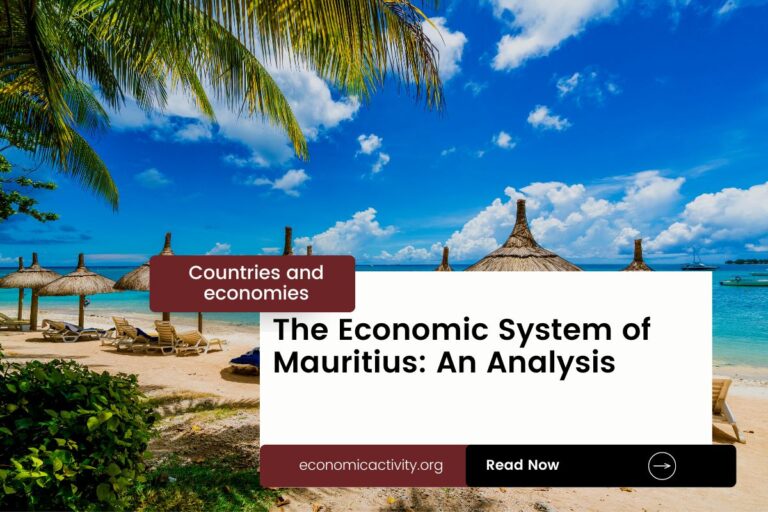Israel, with a population of 9,557,500, is ranked 93rd in the world, just behind Hungary. Located in the Middle East, it covers 22,070 square kilometers, ranking 142nd globally, just below Belize.
Israel’s economic position in 2022 is strong, with a GDP of $525 billion USD, ranking 27th globally. It follows Ireland, which has a GDP of $533 billion USD. Israel’s GDP per capita is $54,930.94 USD, ranking 18th worldwide, behind Canada with a GDP per capita of $55,522.45 USD.
Israel’s economy is diverse, with a focus on technology, innovation, and defense industries contributing significantly to its growth and stability. The country’s strategic location and skilled workforce continue to attract foreign investment and drive economic development.
What are the economic activities of Israel?
- Primary activities: 2.4% of GDP.
- Secondary activities: 26.5% of GDP.
- Tertiary activities: 69.5% of GDP.

Primary Sector of Israel
Israel’s primary sector, particularly agriculture, thrives due to its diverse climate and abundant natural resources. With 29.74% of the land dedicated to agriculture, the country produces a variety of crops and animal products. The main agricultural products include milk, chicken, potatoes, tomatoes, avocados, bananas, grapefruits, eggs, tangerines/mandarins, and carrots/turnips.
Despite contributing 2.4% to the GDP, agriculture plays a crucial role in the economy by providing employment and ensuring food security. The sector’s significance lies in the variety and quality of products it generates, sustaining the country’s agricultural sector and promoting self-sufficiency.
With a diverse geological landscape, Israel boasts natural resources such as timber, potash, copper ore, natural gas, phosphate rock, magnesium bromide, clays, and sand. These resources drive the economy through industries like agriculture, mining, and energy production.
Despite its limited oil production of around 300 barrels per day, Israel ranks 76th globally. With 13.95 million barrels in reserves, it holds only 0.05% of the world’s oil reserves.
Israel’s gas production contributes significantly to the economy, with 10 million m³ produced in 2020, ranking 41st globally.
Secondary Sector of Israel
What is the secondary sector or what are secondary activities?
The secondary sector involves industries that create finished products from raw materials for consumption. In Israel, main industrial products include high-tech items, wood products, potash, food, cement, pharmaceuticals, metal products, textiles, and diamonds.
Manufactures play a crucial role in Israel’s export sector, accounting for 86.99% of total exports in 2023. This highlights their significant contribution to the country’s economy and global trade relations.
Tertiary sector of Israel
What is the tertiary sector or what are tertiary activities?
The tertiary sector in Israel encompasses a wide range of services where individuals provide knowledge and expertise to enhance productivity and meet various needs. This sector includes intangible goods such as advice, attention, and expertise, catering to both consumer and business-to-business services. Some of the main tertiary activities in Israel are healthcare and medical care, education and training, banking and finance, communication and information exchange, tourism and hospitality, and security and protection. These activities play a crucial role in driving the country’s economy and meeting the diverse needs of its population.
Specifically, Israel’s tourism industry is a vital economic driving force, contributing significantly to its GDP. With an impressive 4,905,000 annual arrivals, accounting for 0.5132 tourist arrivals per capita, popular destinations like Jerusalem’s Old City and the Dead Sea attract visitors from around the globe, fueling the country’s prosperous tourism sector.
Another example of tertiary economic activity is the mobile cellular economic sector, with approximately 13.8 million subscriptions, supporting technological growth by enhancing connectivity and fostering innovation across industries.
Military Activities and Economic Sectors of Israel
The military is a key example of various economic activities in a country. It involves the primary sector, like resource extraction for military use, and the secondary sector, which includes the manufacturing of military equipment. The tertiary sector covers the services provided by the military, while the quaternary sector focuses on military research and development. Lastly, the quinary sector deals with high-level military decision-making and strategy.
In Israel, the military expenditure for 2023 is approximately 27,498.5 million US dollars, which is 4.5% of the country’s GDP. The active military force consists of 169,500 personnel, resulting in about 76.3 active military members for every 1,000 people in the population.
Biggest company in Israel
Which is the biggest company in Israel? Check Point Software is the largest, with a market value of $17.59 billion. Founded in 1993, it operates in the IT Software and Services industry, part of the tertiary economic sector, focusing on cybersecurity solutions.
International Trade of Israel
Import Activities of Israel

Israel’s import activities are crucial, with imports amounting to $831.63 billion in 2023, accounting for 28.78% of the country’s GDP.
Israel’s import activities are diverse, with major partners including China, the US, Turkey, Germany, and India. Key import commodities are diamonds, cars, crude petroleum, refined petroleum, and garments.
Exports Activities of Israel

Israel’s export activities in 2023 totaled $599.16 billion, accounting for 31.73% of its GDP. This signifies a medium level of importance, driving economic growth and global trade relations.
Israel’s export activities are diverse, with top partners being the US, China, and the West Bank/Gaza Strip. Key commodities include diamonds, integrated circuits, and medical instruments.
Israel economy challenges in 2024
Israel, a high-income country with a strong tech and industrial economy, faces challenges in 2024. Economic contraction and fiscal deficits from the Gaza war strain finances. The labor force stabilizes post-mobilization, but construction and tourism struggle. High-tech industries show resilience amidst adversity.




Leave a Reply